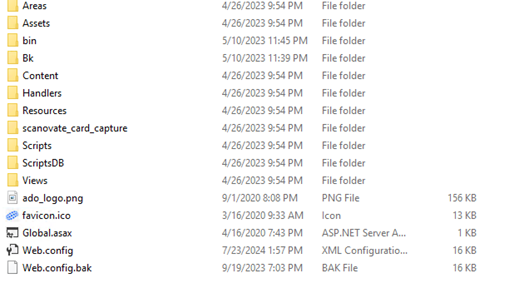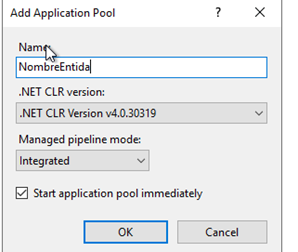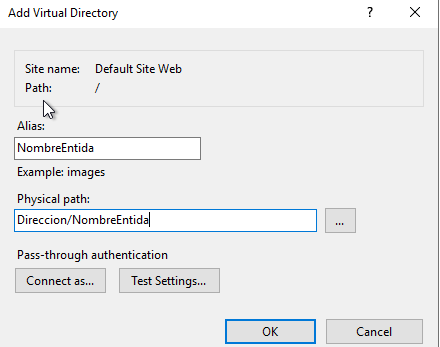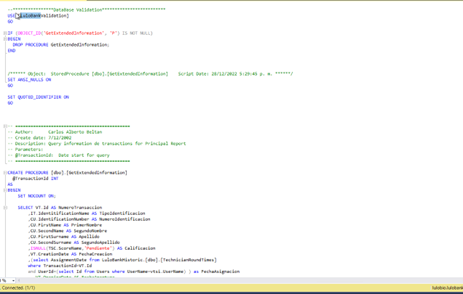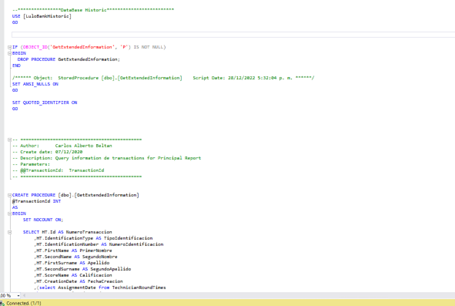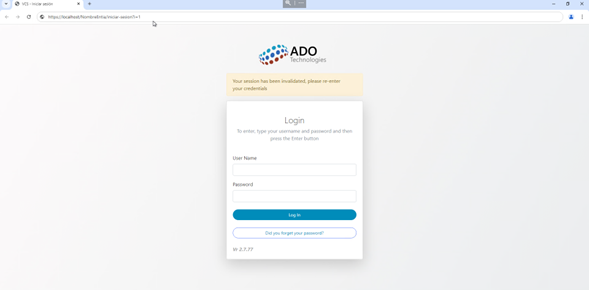Deployment of ADO Sites
Introduction
Welcome to the IIS Site Deployment Manual for Ado Technologies. This document provides a comprehensive guide for the secure and efficient deployment of our platform's websites, specializing in entity management, identity, and compliance.
Manual Objective
The main objective of this manual is to establish a standard and detailed procedure for deploying sites on IIS, ensuring compliance with best practices in security and regulatory requirements. This document also serves as a reference for internal and external audits.
Prerequisites
Before proceeding with the deployment, please ensure you have:
- Appropriate access and permissions to configure and deploy sites on IIS.
- Familiarity with the configuration in web.config.
- Access to the databases NombredeEntidadValidation, NombredeEntidadHistoric, and NombreDeEntidadTemplates.
- Approval from the finance department for production deployment.
- Before making any updates or deployments, it is essential to review the folder structure. This ensures that the compiled code has been correctly copied to the server and properly compressed.
Folder Structure

Folder Descriptions
- Areas:
A folder that contains the different areas of the application, facilitating code organization and modularity. - Assets:
Stores static resources such as images, stylesheets, and scripts used by the application. - Bin:
Contains the compiled files of the application, including the assemblies necessary for execution. - BK:
A folder designated for storing previous backups of the project. It is used to maintain earlier versions during updates. - Contec:
Includes the data contexts used to interact with the database and manage data access logic. - Handler:
Contains the controllers that manage user requests and respond to them, connecting the user interface with business logic. - Resources:
Stores additional resources necessary for the application, such as configuration files or templates. - Scripts:
This folder includes database scripts required for the initialization and updating of the application’s databases. - ScriptsDB:
A specific folder for database scripts. - Views:
Contains the application views that define how data is presented to the user. - Logo.png:
An image file in PNG format used as the application logo. - Web.config:
The application configuration file that contains important settings, such as connection strings to databases and security configurations.
Deployment Steps
1. Identification of the Deployment Environment
Before beginning, determine whether the deployment will occur in QA for testing, STG for staging, or in production (PROD) for the final environment.
2. Approval from Finance Department
Obtain formal approval from the finance department before proceeding with the deployment in the production environment (PROD).
3. Deploying the Site to the Root of IIS
Copy all website files to the root of the IIS directory structure on the designated server.
4. Configuring the Application Pool
In IIS, configure a new application pool for the deployed website, allocating appropriate resources according to technical and performance specifications.
Database Configuration in web.config
Edit the web.config file of the site to configure the connection strings for the databases NombredeEntidadValidation, NombredeEntidadHistoric, and NombreDeEntidadTemplates.
Example Configuration
Below is an example of how to set up the connection strings in your web.config file.
Style Changes and Parameters for the Relevant Entity
Make the necessary style and parameter adjustments for the specific entity related to the site deployment, ensuring consistency with design and functionality requirements.
Automatic Database Creation
Upon first launch, the website will automatically create the databases NombredeEntidadValidation, NombredeEntidadHistoric, and NombreDeEntidadTemplates if they do not already exist.
Security Rules Configuration
The infrastructure team will configure the necessary security rules for the deployed site, including access permissions, firewall settings, and security auditing according to company policies.
Integration with External Databases (Optional)
If the client requires the use of external databases, credentials and the corresponding VPN access point must be provided for proper integration.
Execution of DB Scripts
After deploying the site on IIS, it is necessary to execute the StoredProcedures.sql script located in the ScriptsDB folder. This script contains essential stored procedures for the application's operation.
Instructions:
- Access the Database: Ensure you have access to the databases corresponding to the entity for which you are deploying.
- Script Adjustments:
- Before executing the script, replace the following lines:
- Change USE DATABASEVALIDATION to the appropriate validation entity database.
- Change USE DATABASEHISTORIC to the appropriate historical entity database.
- Execution: Once the adjustments are made, execute the script in the appropriate database environment. Ensure there are no errors during execution and that all procedures are created correctly.
This step is crucial to ensure the application functions properly with the specific entity databases.
Final Considerations
- Document All Changes: Ensure that all changes made during the deployment and configuration process are thoroughly documented.
- Conduct Thorough Post-Deployment Testing: Perform comprehensive testing to verify the correct operation of the site in the production environment.
- Maintain Regular Communication: Keep consistent communication with the development and infrastructure teams throughout the entire process.
Outcome
By following these steps and considerations, you will ensure a smooth and effective deployment process, leading to a well-functioning website that meets both design and functional requirements. Proper documentation and communication are essential for future maintenance and support.

